Why store peripheral stem cells?
There are about 60 trillion cells in the body, about 60-1200 billion cells die every day, and about the same number of cells differentiated by stem cells at the same time. When the rate of cell death is faster than cell regeneration, people age. Their immune system is down and diseases begin to surface. While people are aging, stem cells are also aging, and the ability to regenerate and repair is deteriorating.
Therefore, storing healthy stem cells in good health becomes an important choice for precautions. Storing the healthy stem cells is like saving the future life and health, and storing an extraordinary insurance for the happiness of yourself and your family. If the stem cells are frozen in liquid nitrogen at -196 °C, it’s just like pressing the pause button of cell aging. When the cells are in need, just press the start button and the cells will continue to operate. With the dominance of this starter switch, you can set a stop loss point for your health.
Although most people have missed this prime window of opportunity to bank stem cells, one can still collect peripheral blood stem cells. By collecting peripheral blood bone marrow stem cells, we not only collect hematopoietic stem cells, but also mesenchymal stem cells, VSEL, progenitor cells, and immunocyte cells. So, for the average adults who are no longer capable to collect stem cells, we provide a great way to collect healthy stem cells in sufficient amounts for future therapeutic use.
Can I use my child’s umbilical cord blood as a source of younger stem cells?
Umbilical cord blood must be collected immediately upon birth. While there are hematopoietic stem cells and mesenchymal stem cells in the cord blood, the numbers thereof are limited. Furthermore, for average adult to make practical use of the cord blood stem cells, there must be sufficient amount of the stem cells. If this is the case, pairing is required. Often, the pairing process fails due to issues of repellence. If not for several technical and procedural difficulties, cord blood stem cells are a fantastic source for stem cells.
What is G-CSF?
G-CSF (Granulocyte colony Stimulating Factor) is a glycoprotein that stimulates the bone marrow to produce granulocytes and stem cells and release them into the bloodstream. Beside the effect on the hematopoietic system, G-CSF can also act on neuronal cells as a neurotrophic factor. The action of G-CSF in the central nervous system is to induce neurogenesis, to increase the neuroplasticity and to counteract apoptosis.
G-CSF is also used to increase the number of hematopoietic stem cells before collection, which has been the method used at major medical research centers for HSCs transplantation.
Why inject G-CSF?
After the injection of G-CSF, several different cells, including but not limited to, HSCs, MSCs, B-cell, T-Cell Lymphoma, will be stimulated and released into the bloodstream. The amount of stem cells stimulated and released into the bloodstream will vary depending on the conditions of each individual. It is possible for the amount to increase ten- or even hundredfold. Using the technique for collecting peripheral blood bone marrow stem cells, we are able to collect these cells at one time.
Is G-CSF safe?
In the beginning of 2011, the Journal of Blood Society published a paper on the safety of G-CSF administration. The number of subjects who participated in the experiments neared 4,000. After 12 years follow up, the subjects displayed no side effects and adverse event. The article was published in January, 2011.
Besides infectious diseases and coagulant diseases, what other conditions or circumstances would make an individual inapt to collect peripheral blood stem cells?
- Individuals with chronic Myelogenous Leukemia or Aplastic Amenia, or individuals undergoing chemotherapy.
- Pregnant women, and women in the process of breast-milk feeding.
- Individuals with Deep Vein Thrombosis or Pulmonary Thrombo-Embolic disease.
- Individuals with mental diseases or individuals on drugs containing Lithium.
- Individuals who take antibiotics to reduce inflammations.
/ If an individual is under any of the conditions or circumstances listed above, then further steps must be taken and the process of collecting peripheral blood stem cells must be delayed. /
What is the age limit for peripheral blood stem cells collection?
As long as you are above twenty years old and maintain a rather healthy condition, you are eligible to have your peripheral blood stem cells collected. There is no upper age limit for the collection. However, as you age, both the number of your stem cells and the quality (repopulating ability) of which may decrease. As a result, we advise that you put in reserve your stem cells as early as possible.
What’s the best interval between multiple PBSC collection?
The common standard in the U.S. today is to wait three months for the next collection. To ensure efficient collection, we would recommend next harvesting must begin when your physical and mental states restore to their ideal levels. Thus, at least one year after prior mobilization is recommended.
Could I collect my peripheral blood stem cells when I’m sick?
For certain diseases or illnesses, the individual could still collect his or her stem cells after proper treatment. However, ailments or medications may have affected stem cells counts. It is possible that such negative impact may cause the body to response poorly to G-CSF injection. If poor mobilization happens, the number of stem cells collected are not adequate for practical use. Therefore, it is better to preserve your stem cells when you’re young and healthy.

